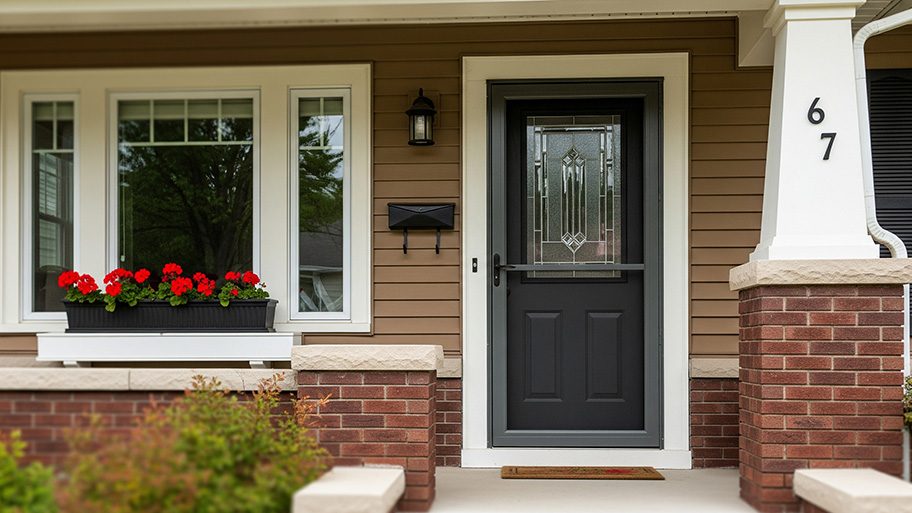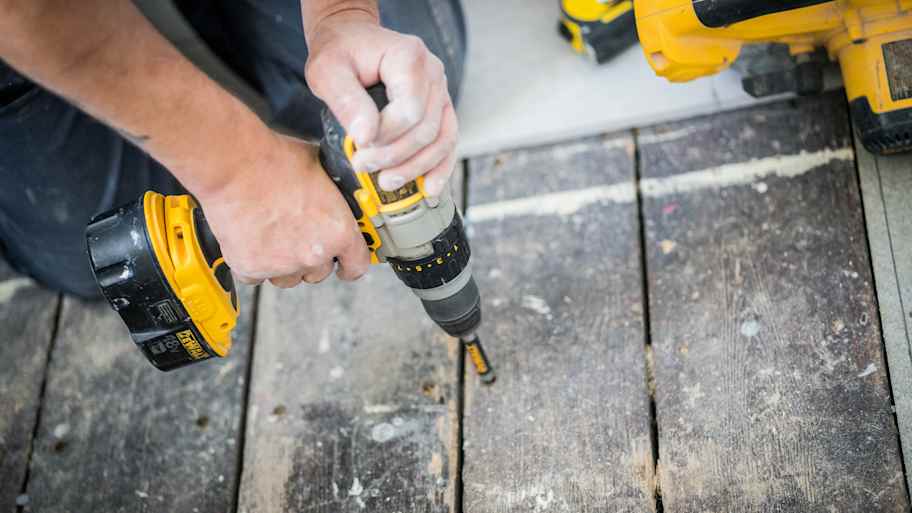
A storm door can protect your front door and let in more fresh air. Find out how much storm door installation costs for materials, labor, and more.
Give door holes the heave-ho


Wooden doors, particularly hollow core doors, are often more fragile than we’d like, and nothing eliminates privacy more than a big hole in the middle of one. Contacting a door repair company to replace an interior door is a surefire way to fix the problem, but there’s a fairly simple DIY fix. Keep reading to learn how to fix a hole in a door yourself with just a few minutes of working time.
Clear up the hole first, cutting away ragged edges around the hole using your sharp utility knife. Grab the knife and work slowly, holding it at a slight angle to create an even, beveled cut. Use a gentle sawing motion to remove any splintered edges.
Now, it’s time to start insulating the hole, which helps prevent another accidental hole later on. Start by crumpling up a small amount of newspaper or printer paper and slide the wad into the hollow area, pushing it to occupy the open space surrounding the hole. Make sure to go all around the perimeter, as this crumbled paper acts as a barrier to contain the insulation.
Next, spray your low-expansion aerosol foam insulation into the hole, using the straw accompanying the can unless otherwise instructed (avoid high-expansion foam to prevent excessive pressure and damage to other parts of your door). Start at the back of the hole and spray slowly and carefully. Aim to fill the void with the DIY spray foam insulation, using the paper inside as a border. Try not to spray foam too far outside the door's surface, but don’t worry too much if you do.
Let the foam sit for 15 minutes until the insulation is soft and rubbery, but be careful to let it sit longer if the manufacturer calls for a longer curing time.
Foam insulation likes to expand. If some insulating foam expands outside the hole, cut away the excess. Start by waiting until the foam is fully dry and putting on some safety gloves. Cut away at the excess with the utility knife blade flush against the door’s surface and trim the foam slowly and carefully.
Once the foam insulation is flush with the door, lightly sand it with 120-grit sandpaper. Next, use your putty knife to apply some spackle. Apply a thin layer of the substance directly over the filler. Once the spackle dries, go back to sanding and add another fine layer of spackle. Let it dry before doing another very light sanding. Run your fingers over the surface to test for smoothness, and repeat the process until it’s completely smooth.
Use matching paint to cover up any inconsistencies or signs of repair. Use your brush to apply an even layer of paint over the hole. Let the paint dry for a couple of hours, and apply another coat. For best results, go for two to four coats, with adequate drying time between each. Once it’s thoroughly dried, enjoy your fine handiwork.
The steps above apply to hollow core doors, which are empty in the middle. When repairing a hole in a solid wood door, you don’t have to stuff the hole with paper materials (as described in the second step). For the third step, use spray foam to fill the gaps or a wooden dowel trimmed to size. Once you install the dowel, apply wood filler and sand until smooth with 120-grit sandpaper. Finish up with a paint job, and your door will be like new.
Based on data from Angi, about 31% of homeowners need to repair the frame of their doors. Locksets and hinges are the next most common parts of a door that need repair, at 10.7% and 9.6%, respectively. Check out the other most common parts of a door that need repair.
The cost to repair a door depends on the extent of the damage. Average labor costs for a local door repair company run between $40 and $90 per hour. If you contact a handyperson in your area instead, you'll pay less, at $30 to $40 per hour. All in, fixing a large hole or crack costs $50 to $100 when you hire a pro.
Repairing a hole in an interior door is a DIY-friendly project, so you can save some money on door repair costs by doing the work yourself. If you don’t have the time to repair your interior door or feel uncomfortable handling the necessary tools, hiring an expert will ensure a professional finish—as if there was never a hole in the first place.
From average costs to expert advice, get all the answers you need to get your job done.

A storm door can protect your front door and let in more fresh air. Find out how much storm door installation costs for materials, labor, and more.

The frame is a crucial part of a door’s looks and proper functioning. Here’s how much you can expect to pay to replace a door frame in your home.

French doors upgrade your space and fill it with natural light. Use this guide so that you can accurately budget the cost to install French doors.

Dreaming up new home construction or an addition? Perusing through all the types of doors is a crucial step in the design process.

The smallest details can make a massive impact. From modern to ornate, here are the top door casing styles to consider for your next home renovation.

Screen and storm doors offer protection and allow more natural light into your home. Uncover the critical differences between storm doors and screen doors.